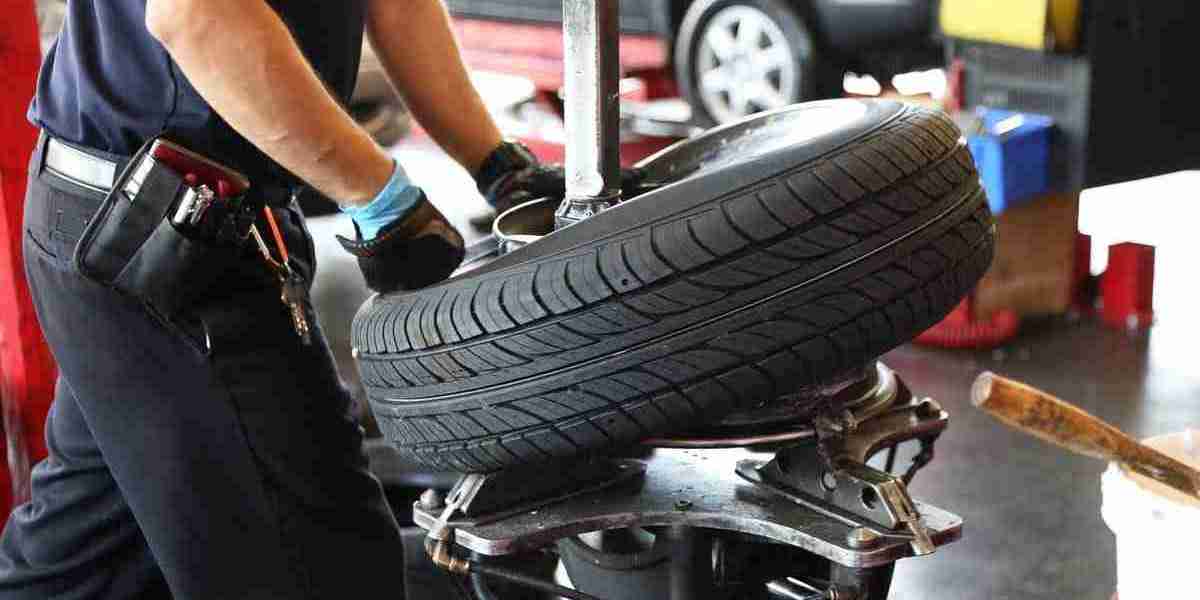A tyre puncture can happen when you least expect it—whether you're on a busy motorway or a quiet country road. Knowing what to do after a puncture can help you stay safe and avoid further damage to your tyre.
If you're looking for professional tyre repair in Bournemouth, it's important to choose a reliable service that ensures long-lasting repairs. But before you get to a repair shop, here’s what you need to do when you get a flat tyre.
1. Stay Calm and Pull Over Safely
1.1 Don’t Panic
A sudden puncture can cause your car to pull to one side, but avoid sudden braking or sharp steering. Keep a firm grip on the wheel and gradually slow down.
1.2 Find a Safe Spot
If possible, move to a flat, stable surface away from traffic. Avoid stopping on curves or narrow roads where visibility is low.
2. Turn on Hazard Lights and Use Safety Gear
2.1 Warn Other Drivers
Turn on your hazard lights immediately to alert other motorists.
2.2 Use a Reflective Triangle
If you have a warning triangle, place it about 45 meters behind your vehicle to improve visibility.
3. Inspect the Damage
3.1 Check for Visible Punctures
Look for objects like nails, glass, or screws embedded in the tyre. If you see one, don’t pull it out, as it may help seal some air inside.
3.2 Check the Sidewall
If the sidewall is damaged, the tyre may not be repairable, and you’ll likely need a replacement.
4. Decide Whether to Repair or Replace
4.1 Can You Drive on It?
- If the puncture is small and the tyre still has some air, you may be able to drive a short distance to a repair shop.
- If the tyre is completely flat, avoid driving as this can damage your wheel and suspension.
4.2 Can You Use a Tyre Repair Kit?
Some punctures can be temporarily sealed using a tyre sealant, but this is only a short-term solution.
5. Change the Tyre (If You Have a Spare)
5.1 Gather Your Tools
You’ll need:
- A spare tyre
- A jack
- A wheel brace (lug wrench)
5.2 Follow These Steps
- Loosen the wheel nuts slightly before jacking up the car.
- Raise the car with the jack and remove the damaged tyre.
- Install the spare tyre and tighten the nuts securely.
- Lower the car and check the tyre pressure before driving.
6. Call for Roadside Assistance
6.1 When Should You Call for Help?
If you don’t have a spare, your tyre is beyond repair, or you’re in a dangerous location, call a breakdown service.
6.2 Mobile Tyre Repair Services
Some tyre shops offer mobile repair services, meaning they can fix or replace your tyre on the spot.
7. Visit a Professional Tyre Repair Shop
7.1 Get a Proper Inspection
Even if you use a temporary fix, it’s crucial to have a professional check your tyre for hidden damage.
7.2 Choose a Trusted Repair Service
If you're in Dorset, getting a tyre repair in Bournemouth from a professional service ensures a safe, long-lasting fix.
8. Prevent Future Punctures
8.1 Check Tyre Pressure Regularly
Underinflated tyres are more prone to punctures, so keep an eye on your tyre pressure.
8.2 Avoid Road Hazards
Be cautious when driving over potholes or debris, as these can increase the risk of a puncture.
8.3 Rotate Your Tyres
Regular tyre rotation helps ensure even wear and reduces the chances of punctures.
Final Thoughts
A tyre puncture is never convenient, but knowing what to do can keep you safe and prevent further damage. Whether you fix it yourself or seek professional help, always prioritise safety.
For expert tyre repair in Bournemouth, choose a reliable service that ensures your tyres are repaired properly, keeping you safe on the road.




